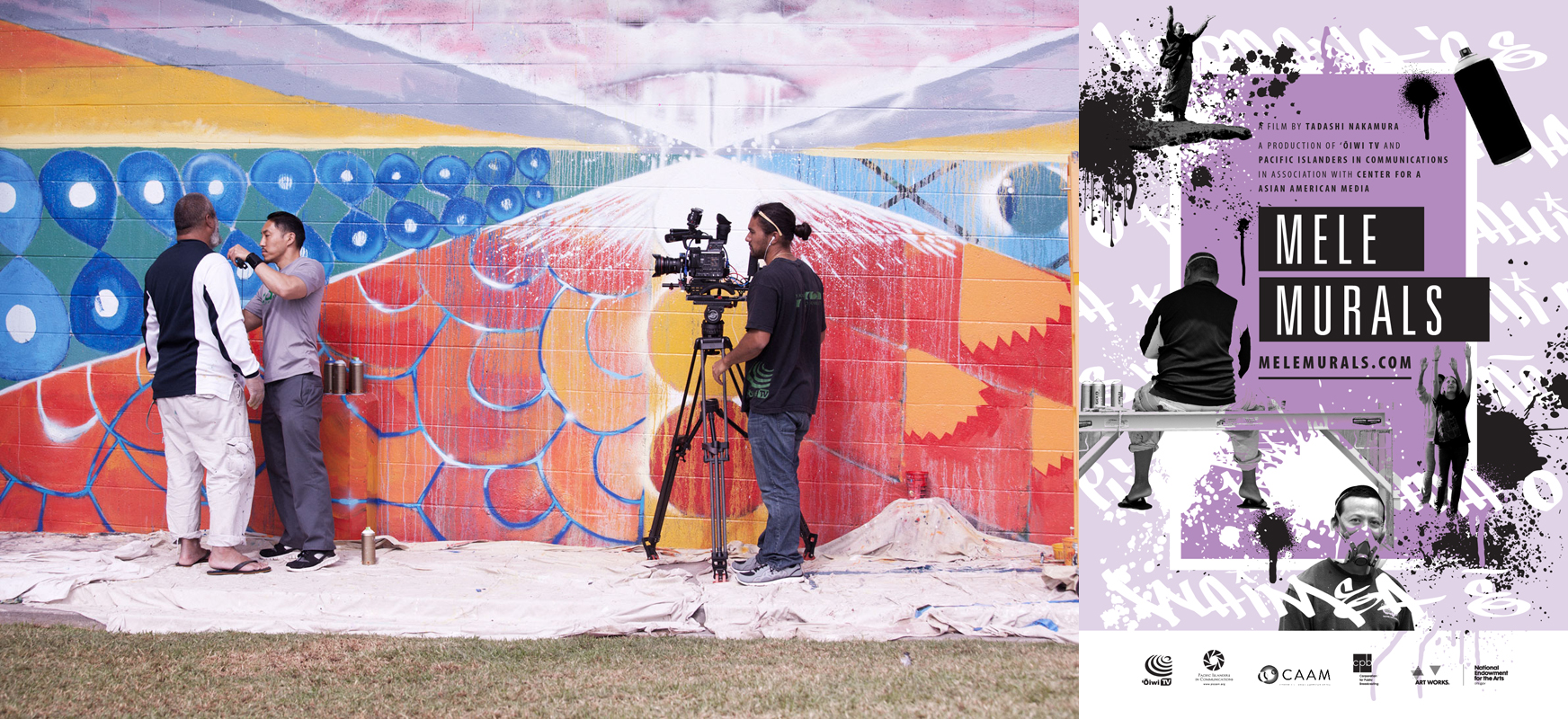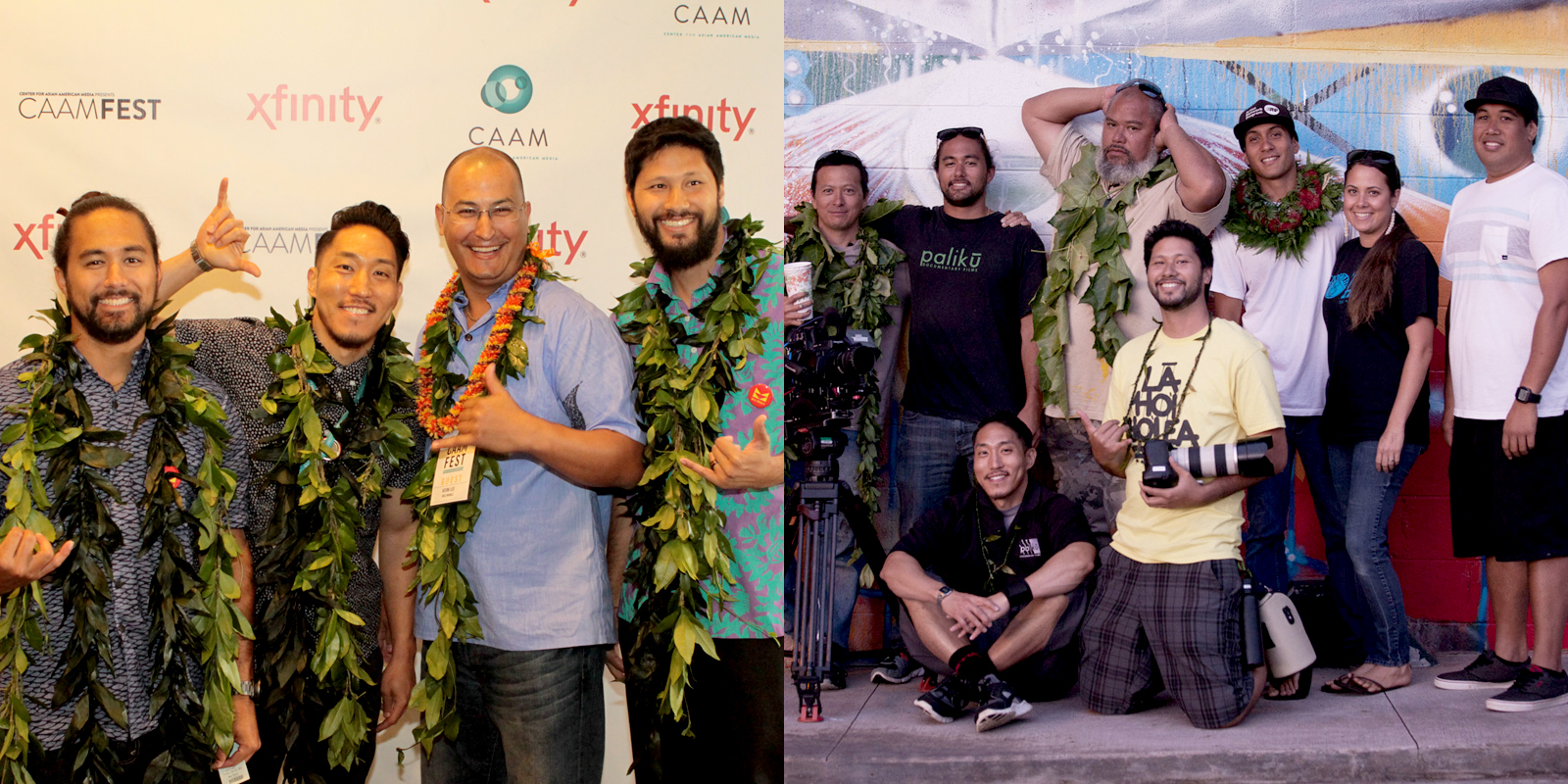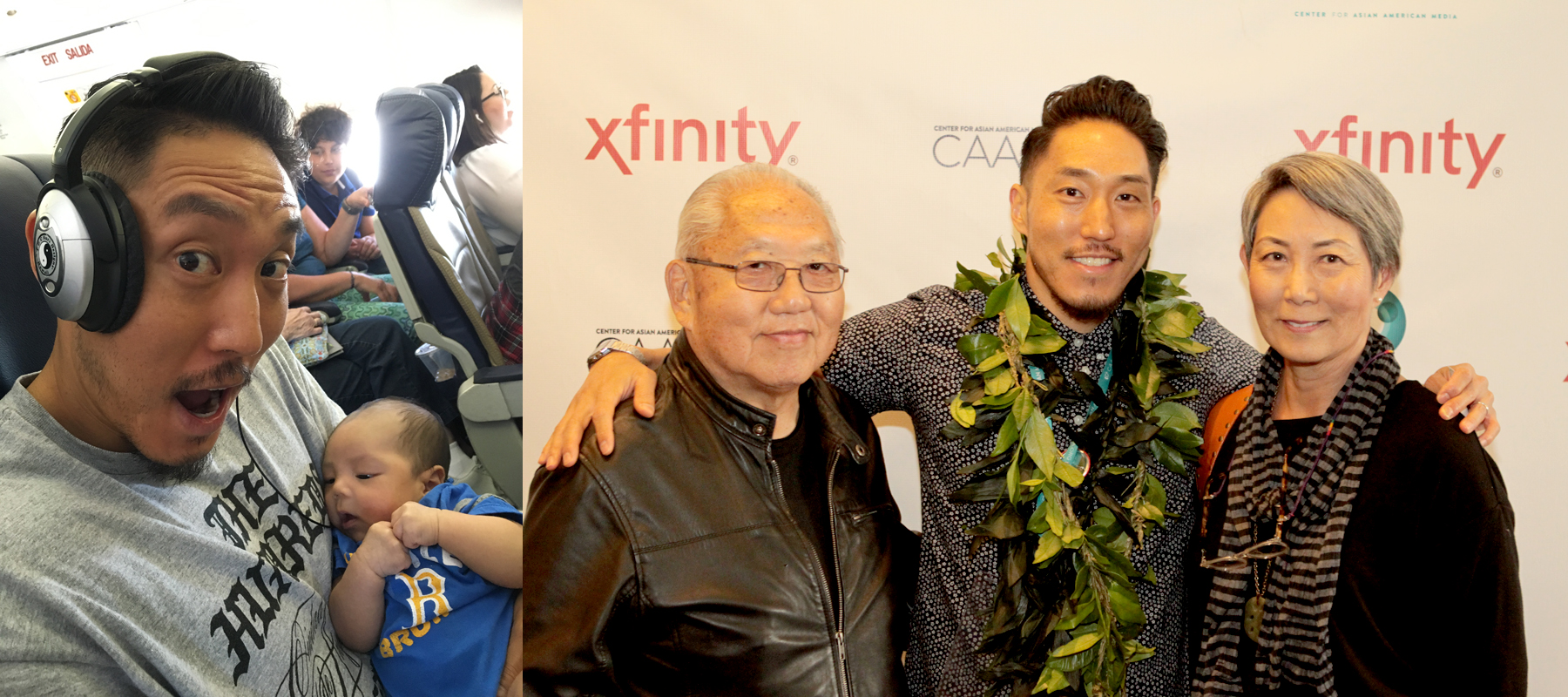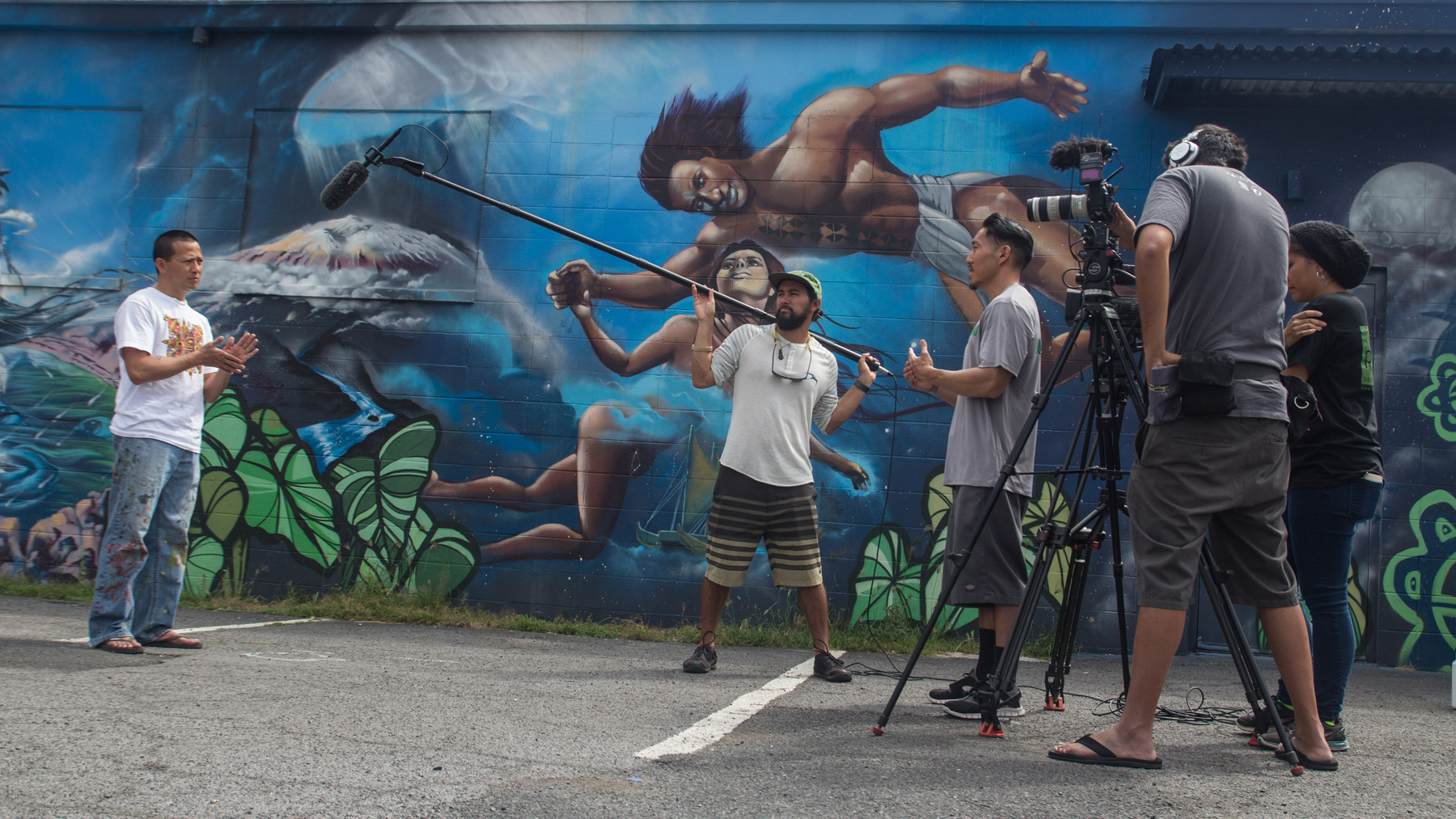Aug 01, 2016 8 Questions with: Tad Nakamura of Mele Murals

It was so long ago that I can’t even remember when I first met Tad Nakamura. I’m pretty sure it was in the Asian American and indie film festival circuit after he made Yellow Brotherhood, a short film that involves the Yellow Power movement of the ’60s and ’70s. As a member of the press, staff, and then guest of that scene, I’ve seen my friend again and again, as he’s made deeply personal and smart movies about the movement, art, and culture that inspires him.
Tad’s latest piece is a documentary about the unlikely union of graffiti and ancient Hawaiian culture and the transformative power of art. Mele Murals premieres on Friday, August 5 at the Aratani Theatre in Little Tokyo before hitting the film fest circuit, so I had to ask him about it.
What inspired you to embark on Mele Murals?
I first started working with ʻŌiwi TV on my last film Jake Shimabukuro: Life on Four Strings. That’s how I met Keoni Lee, who co-founded the ʻŌiwi TV – Hawai’i only indigenous television network. Keoni had seen the murals that Prime and Estria were painting around Honolulu and was really drawn to the way they were using Hawaiian cultural elements in their work. He approached me about making a film about these murals and their connection to a larger cultural resurgence within the Native Hawaiian community. I jumped at the chance to work with ʻŌiwi TV again–especially on a project that combined both hip-hop and indigenous culture.
As a fourth-generation Japanese American growing up in L.A. in the ’80s and ’90s, I identified with hip-hop culture more than anything else. Hip-hop became my foundation and inspiration to be a documentary filmmaker. I wanted to use film to document and present my community’s stories in an empowering way. The reason why I click so well with ʻŌiwi TV is because we share that same mission. Once we began filming with Estria and Prime, I realized that they were trying to do the same thing, too, but with the spray can.
How would you compare this filmmaking experience to some of your previous works?
Making Mele Murals was the first time I worked outside of my own Japanese American community. While my previous two films took place in Honolulu, they were not centered around the Native Hawaiian community. The only reason I felt comfortable directing this film was because I knew I would be working side by side with Producer Keoni Lee, Associate Producer Aina Paikai, and Director of Photography Justyn Ah Chong–three Native filmmakers from ʻŌiwi TV who have been documenting the Hawaiian community for years. It was only because of my association with them that Prime, Estria, and the teachers and students at Kanu o ka ʻĀina Charter School allowed me into their lives and trusted me with their story.
This project allowed me to learn so much about the Hawaiian culture and I continue to be blown away by the strength and beauty of the people, their traditions, and their land. I am still learning how to be an ally to the Native Hawaiian community in their struggle to protect their culture and language, and directing this film was an attempt to strengthen my understanding and support of their movement.
How would you define or describe your body of work?
I guess I would describe my body of work as a presentation of Asian American and Pacific Islander stories created to remind ourselves that we have always been activists and artists who strive to make positive change within our immediate and broader communities. I’m hoping that these stories inspire us to continue to find creative ways to define and re-define who we are.
Has being a parent affected your view toward documentary filmmaking?
It’s made me way more emotional! I cry all the time at sappy commercials and Make A Wish Foundation features on SportsCenter, haha. I’ve only been a parent for a couple of months and I have no idea how I’m ever going to get any work done!
No but foreal, I was used to seeing the world as a youth, as a son, or as a brother. That’s why my early films were more historical, looking at what past generations had done and what lessons can we take from them to apply to the present. But my last two films have been more about the artist’s journey and how to balance family and career while still being challenged creatively. I think that struggle for balance is something that I will really have a hard time with as a new parent.
Where do you find inspiration outside of cinema and family?
Music inspires me creatively more than anything else. I learned to edit by cutting still photos to music, following the rhythm and structure of a song and letting that determine my cuts and movement.
The part I enjoyed the most while editing my last three films was being able to reinterpret a specific catalogue of songs to create the tone and mood for the films. I’ve been a huge fan of Sabzi who produces the tracks for his two groups Blue Scholars and Made in Heights. Way before I started working on Mele Murals I had listened to Made in Heights’ self-titled album and immediately wanted to cut something to it. The tracks are so cinematic and dynamic. Last year when I was editing the film they dropped their second album Without My Enemy What Would I Do and I ended up using half the songs on that album in Mele Murals. Most of the scenes in the film are structured and paced by Sabzi’s music.
As a kid, what did you want to be when you grow up?
In elementary school I wanted to be a sponsored skateboarder. Specifically, I wanted to be Christian Hosoi and Steve Caballero. They were some of the few Asian American men I saw in the media and they were cool as fuck! All I wanted was my own deck and logo design!
In middle and high school I wanted to be the starting Strong Safety for the UCLA football team wearing number 4 or 7, then get drafted by the Oakland Raiders and play special teams wearing number 21 or 23.
Are you reading or listening to anything cool at the moment?
I’ve been trying to step-up my podcast game and really like Denzel Washington is the Greatest Actor of All Time Period with W. Kamau Bell and Kevin Avery, Politically Re-Active also with W. Kamau Bell and Hari Kondabolu, and Jalen & Jacoby. Right now I’m reading The New Father: A Dad’s Guide to the First Year by Armin A. Brott and Who We Be: The Colorization of America by Jeff Chang.
What’s your favorite post-work destination?
The gym. It’s the only place where I can take a break from the world while still being sober.
Find out more at piccom.org, get tickets at web.ovationtix.com, and follow Imprint on Twitter, Instagram, and Facebook, too.





